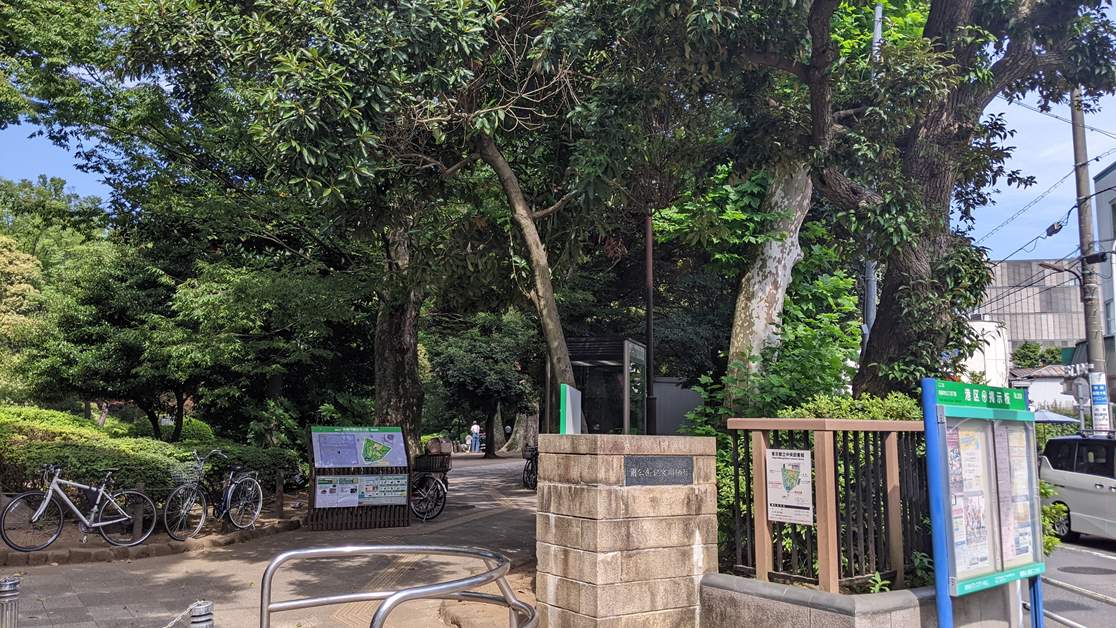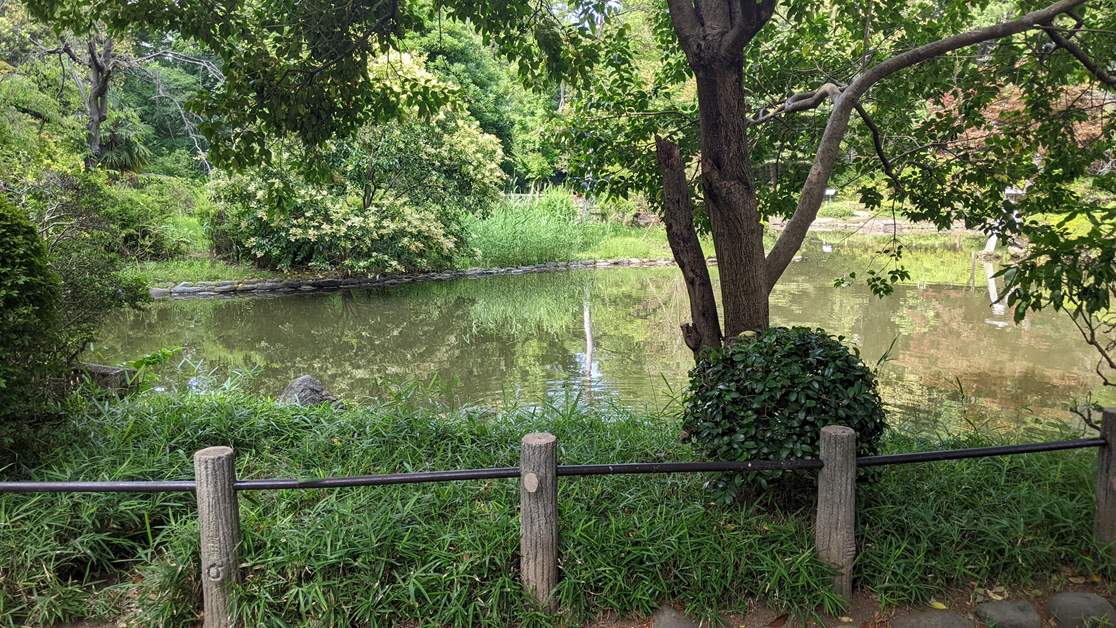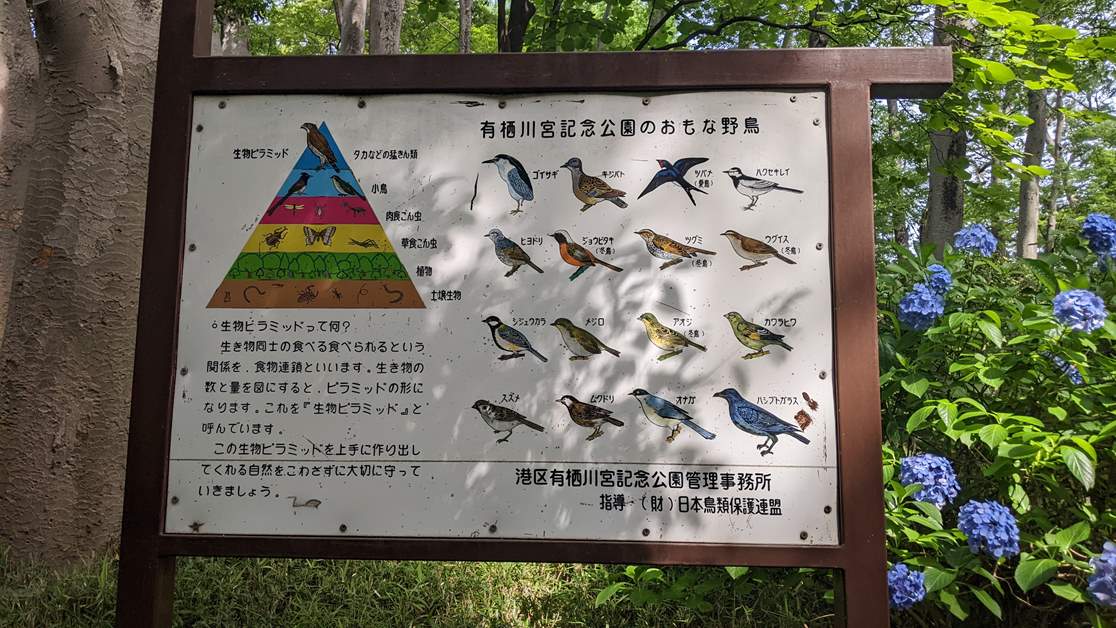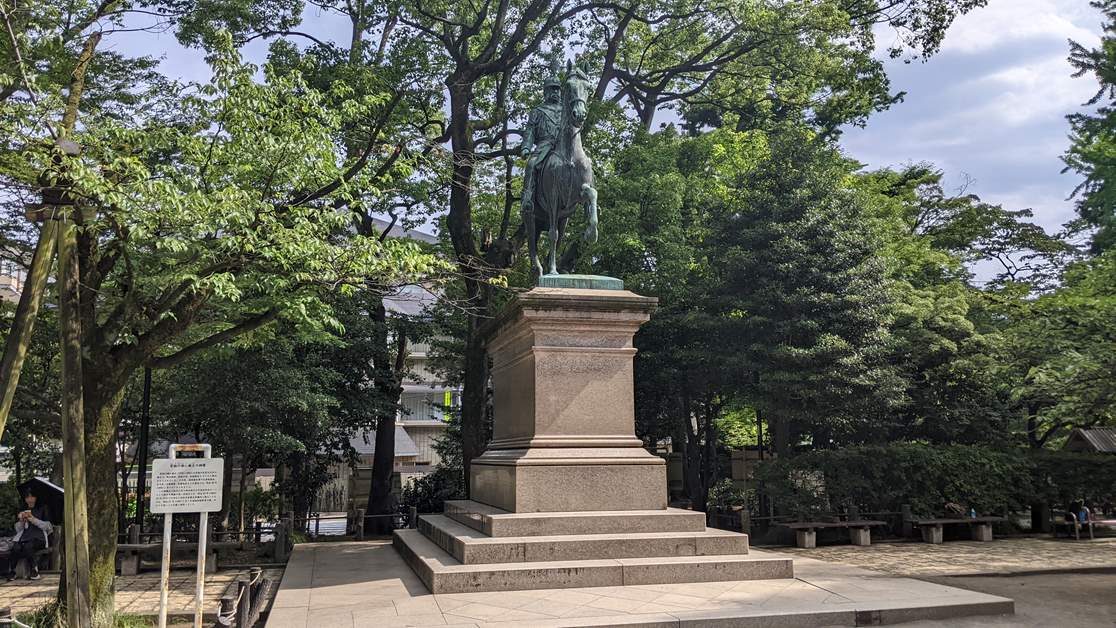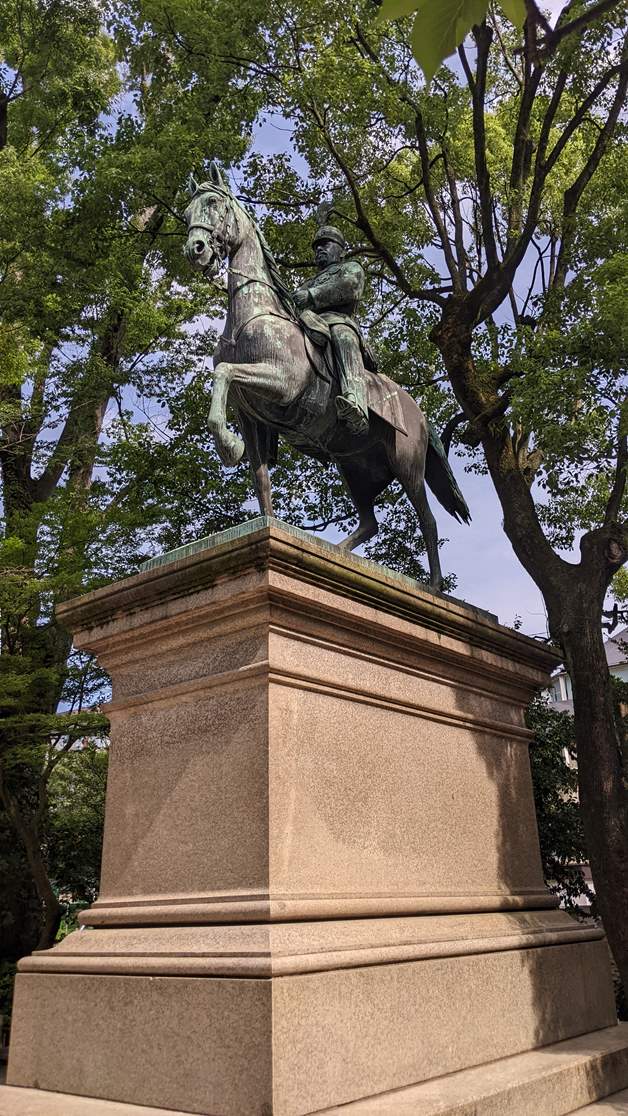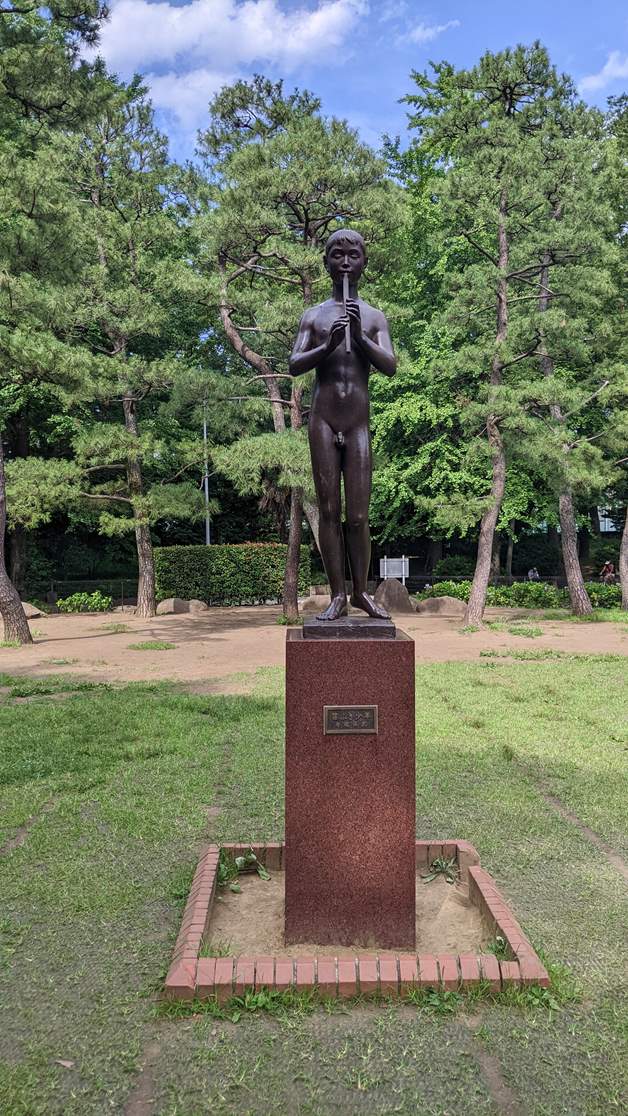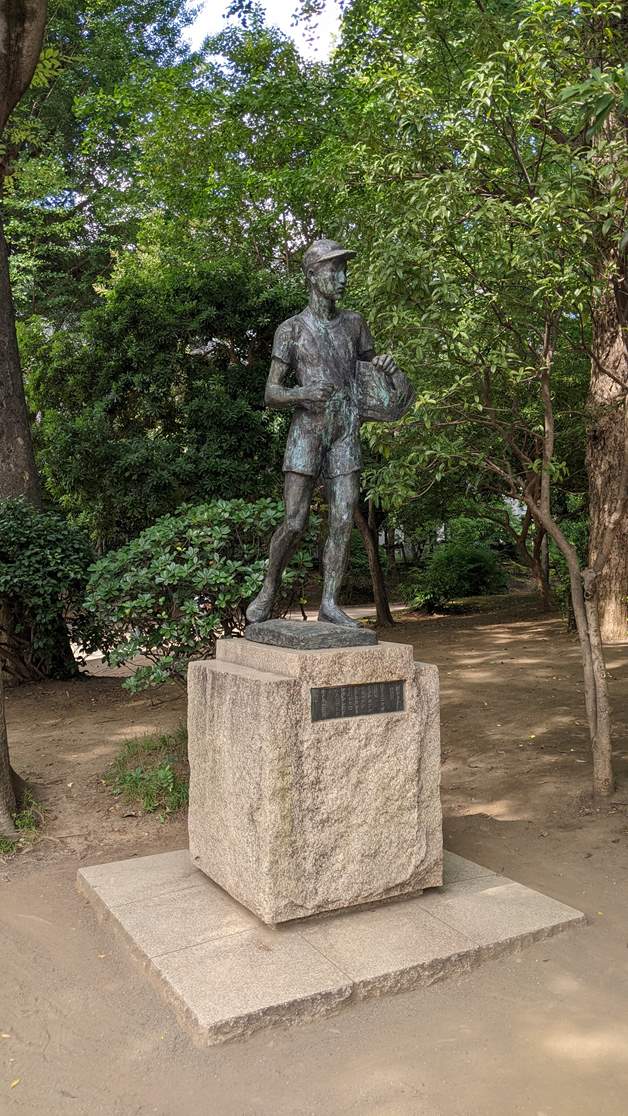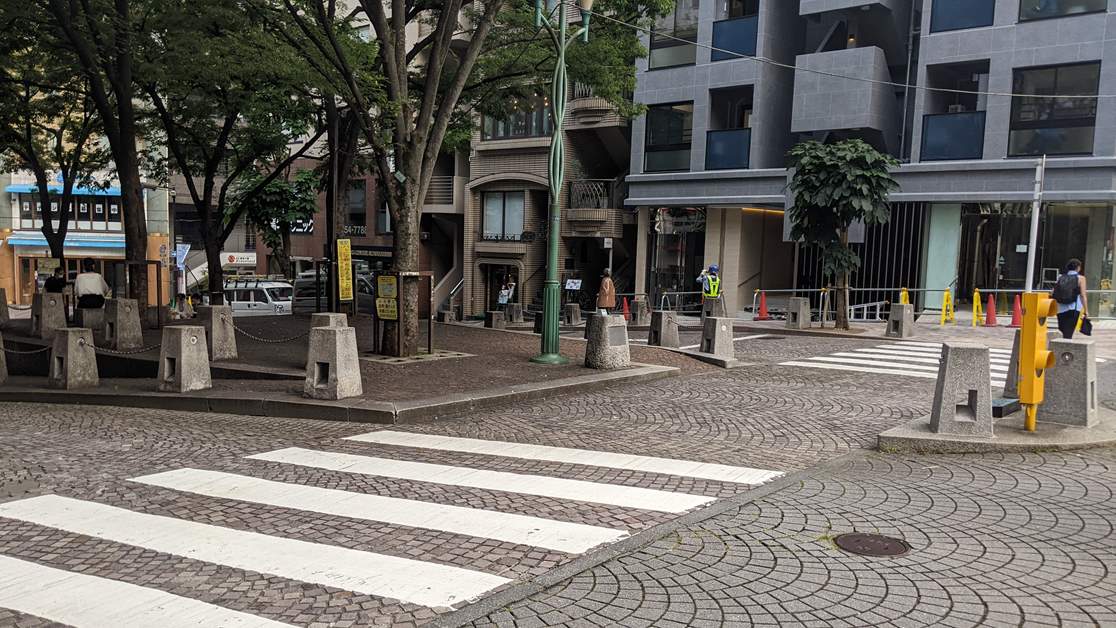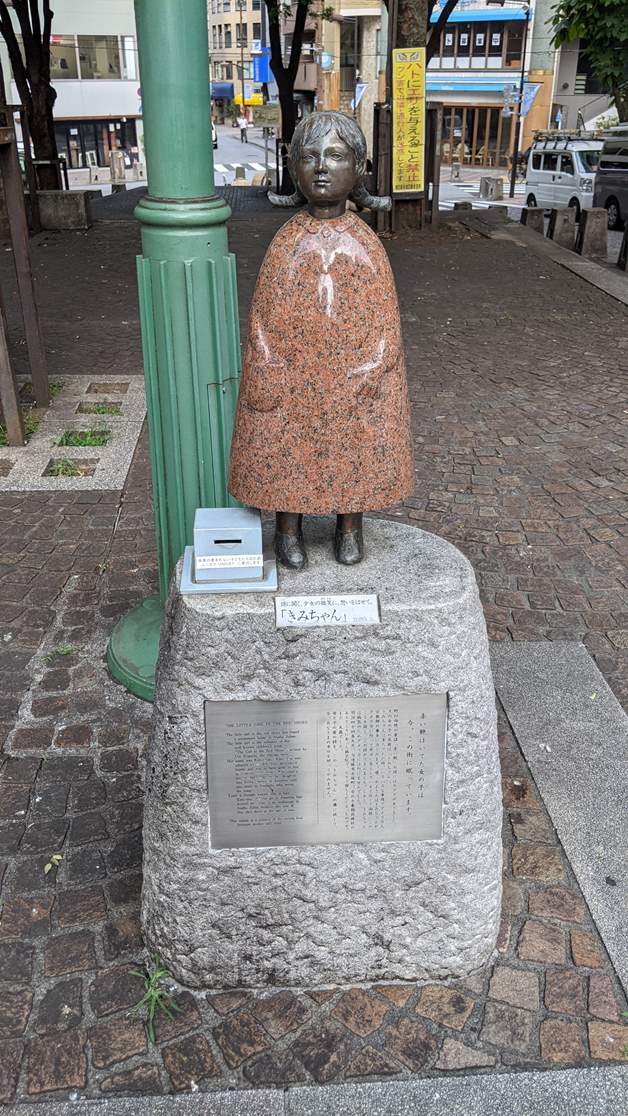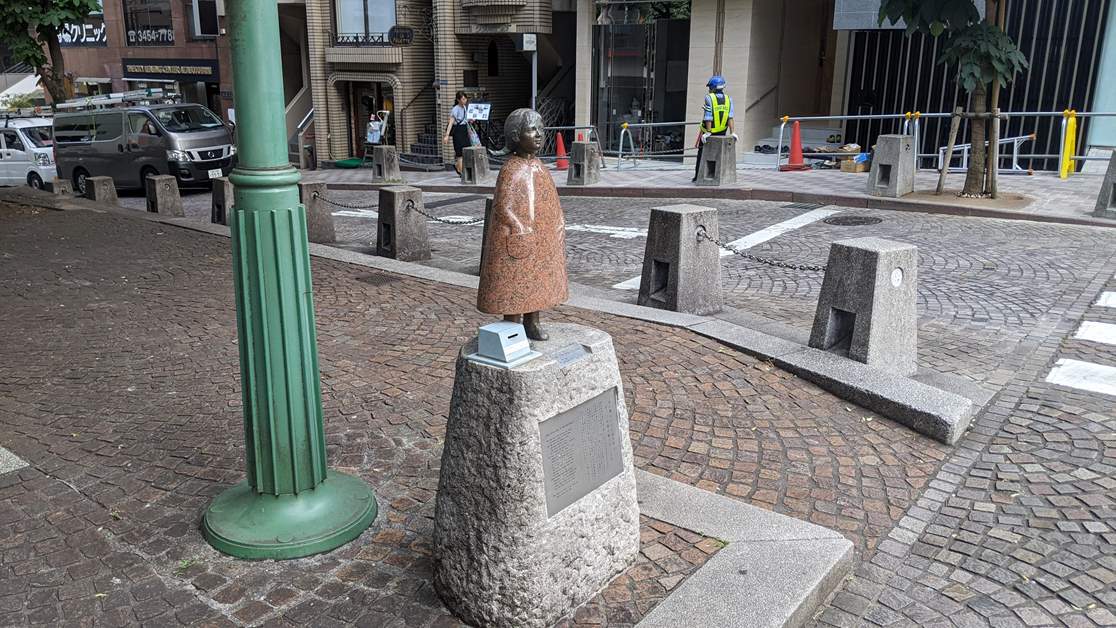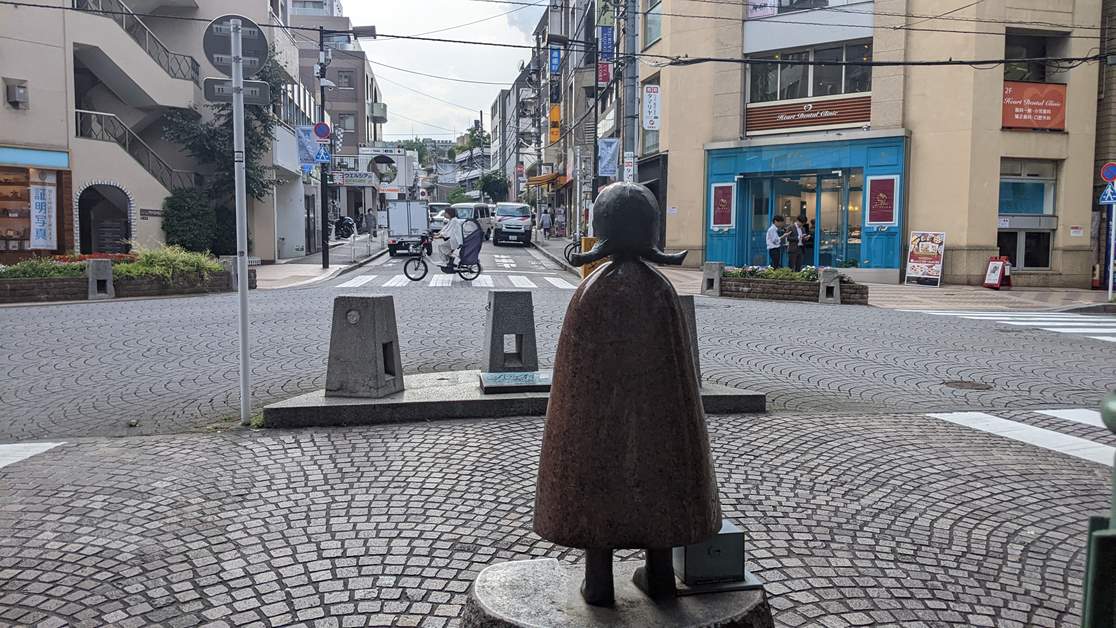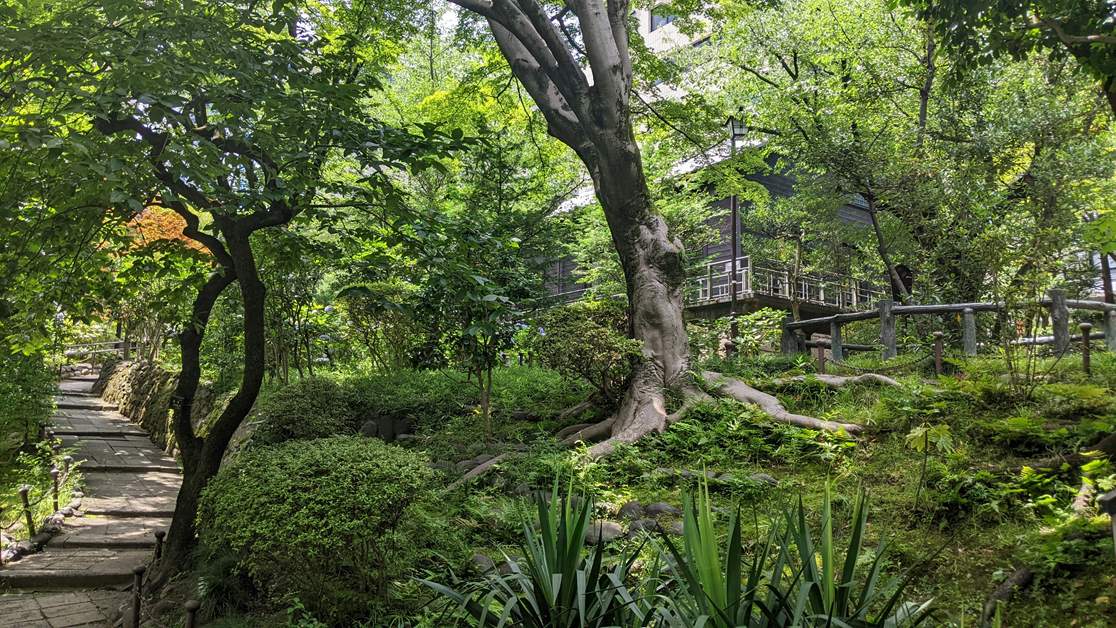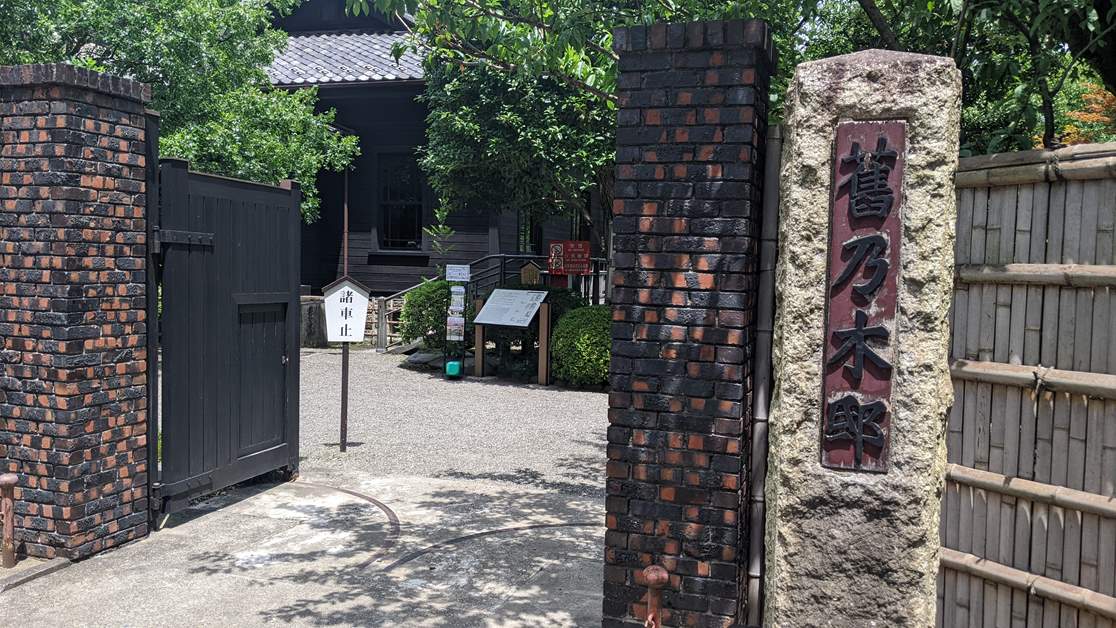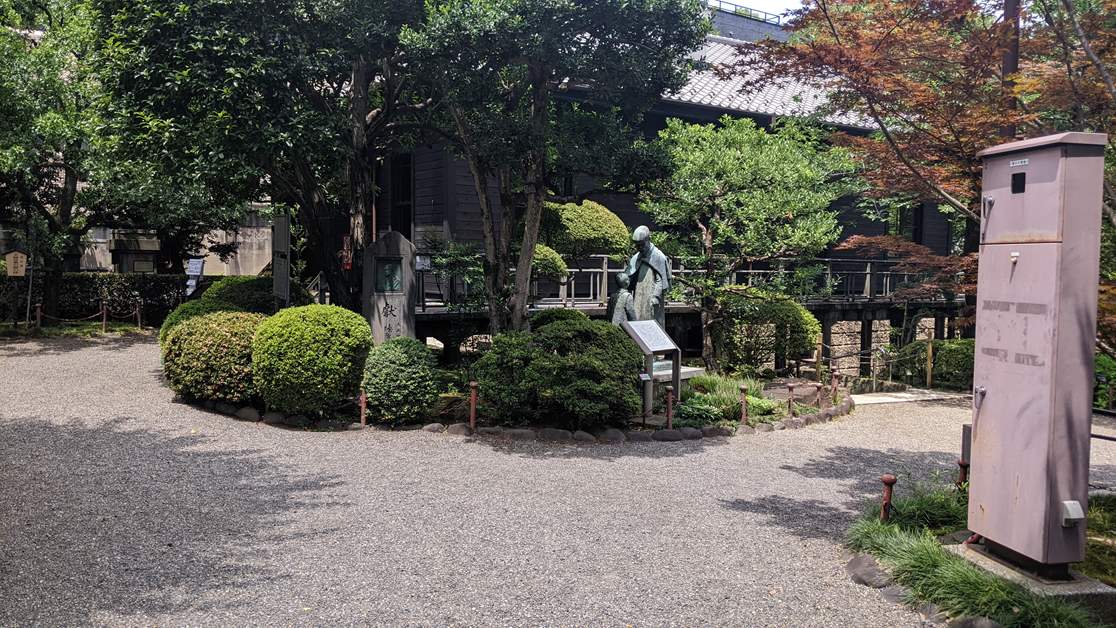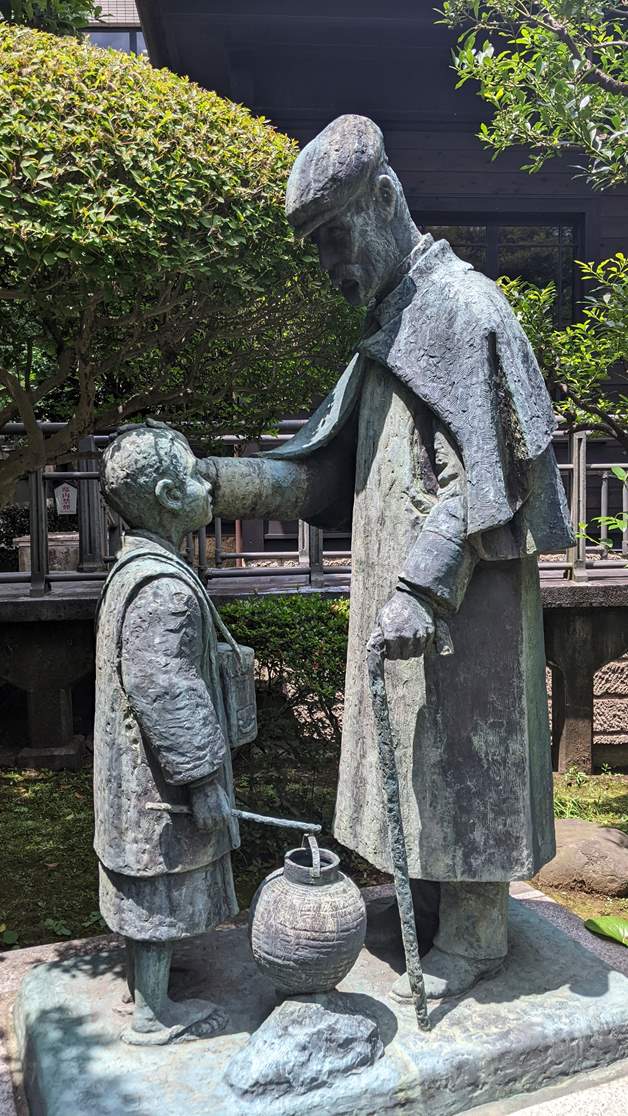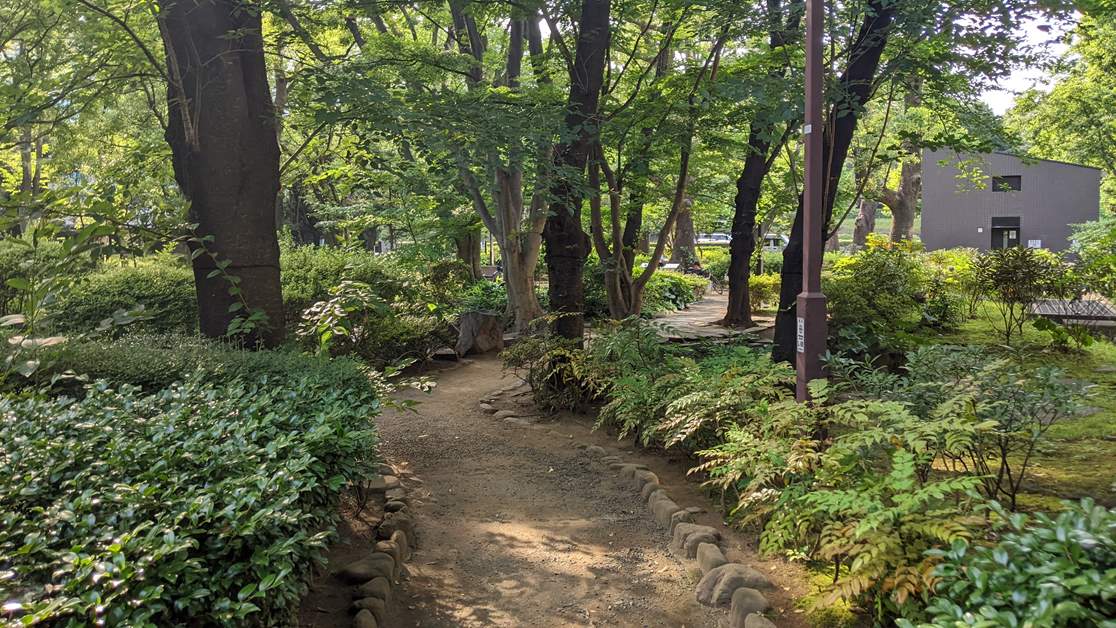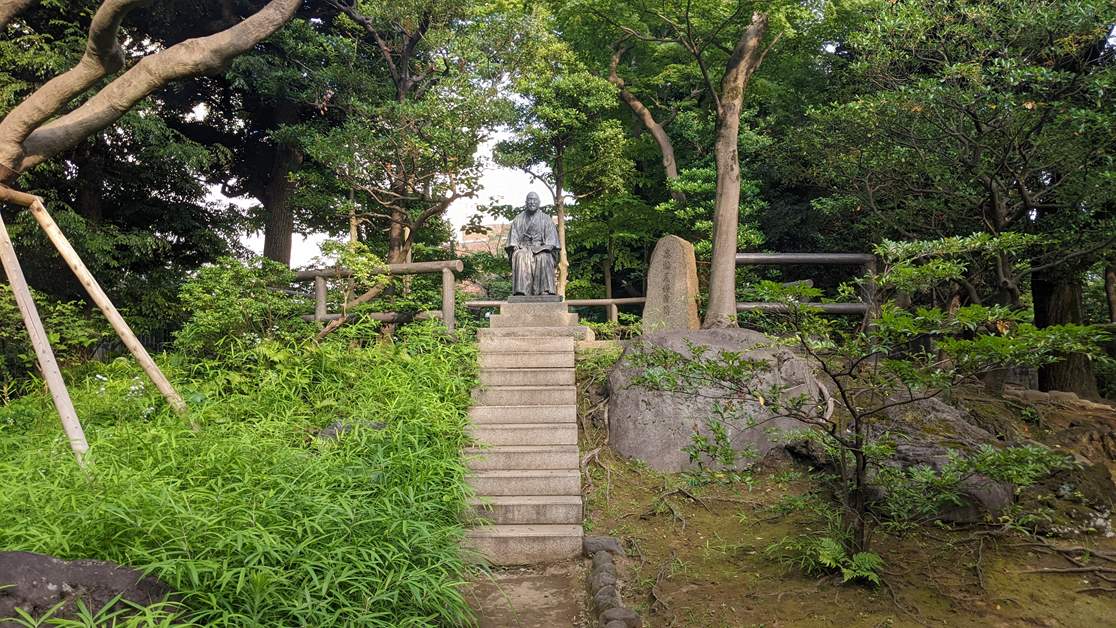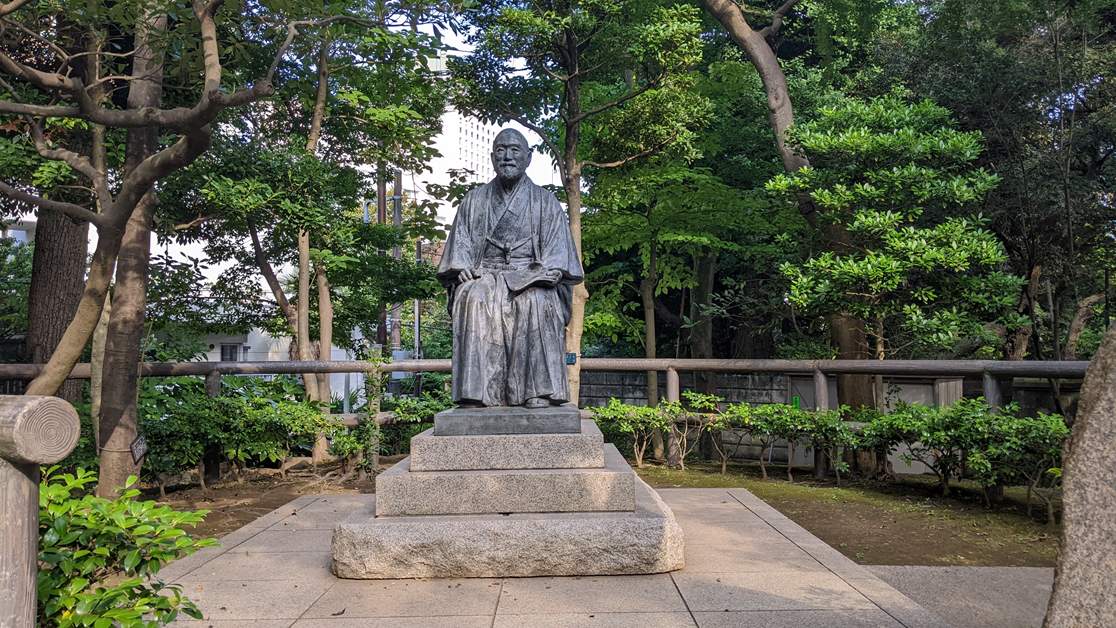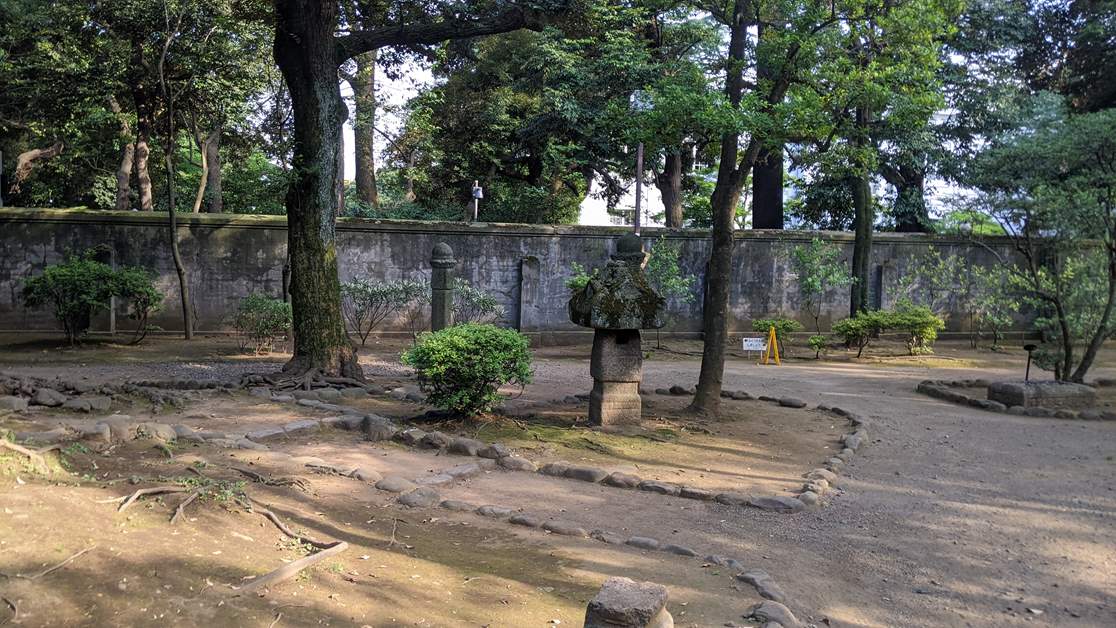Meet historical figures! Tour of Bronze Statues in Minato City
Bronze statues of people associated with Minato City are scattered throughout the city. Many of them are located in the city or in parks, and have been loved by people as symbols of the area. What do these statues, which have stood in their place for many years, think about? We have visited a variety of statues in Minato Ward, from stately, powerful statues to small, cute statues.
The equestrian statue of Prince Arisugawa's son, Prince Chikuhito, has a great impact!
The tour starts at Arisugawa-no-miya Memorial Park, where a statue of Prince Arisugawa's cavalry horse has been installed. Arisugawa-no-miya Memorial Park in Minami-Azabu was the site of the former Morioka feudal lord Mino no Mamoru Nanbu's residence in the Edo period (1603-1868). Since it was opened to the public as a memorial park, it has become a healing spot for people. The park is lush with greenery, and visitors can enjoy the seasonal flowers and plants, including Japanese apricot, cherry, and dogwood.
The park's varied terrain of hills, valleys, and lakeside areas is perfect for strolling. It is also known for the variety of birds that fly here, including goblin, rufous turtledoves, wagtails, and shorebirds.
Visitors enter the park from the Hiroo Station side and walk up the hillside to the plaza. The statue of Prince Arisugawa's horseman, Prince Chikahito of Arisugawa, is a powerful sight in the open space. The daring figure is a sight to behold.
Prince Takehito Arisugawa (1835-1895), the ninth generation of the Arisugawa family, became the Grand Governor-General of the Eastern Expeditionary Force during the Boshin War and led the government forces to a bloodless victory over the Edo Castle. Prince Chikuhito was scheduled to spend his final years here, but he died without taking up residence. The statue of the cavalryman was created by sculptor Ujihiro Okuma and erected in 1903 on the premises of the former General Staff Headquarters on Miyake-zaka, Chiyoda-ku, Tokyo. In 1962, the statue was moved to this park, which is also closely associated with Prince Hisakuni.
Other statues in the park include a statue of a flute player by Yasutake Funakoshi and a statue of a newspaper boy by Kyoko Asakura.
The story of Kimi-chan, the model for "The Red Shoes
A 15-minute walk from Arisugawa-no-miya Memorial Park will take you to the Azabu Juban shopping street. Here stands a statue of Kimi-chan, the girl with the red shoes who was the model for the children's song "Akai Shoes" by Amessyo Noguchi.
The poem "Akai Shoes" was written by Amejo Noguchi in 1921 and the music was composed by Chosei Motoyo the following year. Kimi-chan Iwasaki, the model for the poem, was adopted by an American missionary at the age of 3 for various reasons. Her mother, Kayo, who believed that Kimi-chan was living happily in the U.S., told this to Amejo, and "Red Shoes" was written. However, Kimi did not go to the U.S. due to tuberculosis, and died in 1911 at the age of 9 at an orphanage in Azabu Nagasaka-cho. The statue of Kimi-chan, entrusted with the bond of love between mother and child, was erected at Patio Juban in the shopping arcade in 1989.
The money placed in the donation box at the foot of the Kimi-chan statue is donated to UNICEF every year.
A statue of General Nogi's personality is located in the park.
Nogi Park, a 25-minute walk from the Kimi-chan statue, is the site of the residence of Kisuke Nogi (1849-1912), an army general who fought in the Sino-Japanese and Russo-Japanese wars. The land was donated to the Tokyo Metropolitan Government by General Nogi's will, and the park was established in 1913. The interior of the former Nogi residence, which remains in the park, is open to the public three times a year.
The statue of Shogun Nogi and the Tsujiura vendor boy stands right next to the former Nogi Residence. The statue was erected in 1891 when Shogun Nogi visited Kanazawa and met an 8-year-old boy who was a Tsujiura vendor by trade.
General Nogi was impressed by the boy's support for his family's livelihood and gave him two gold yen. Never forgetting his debt of gratitude, the boy worked hard and made great achievements in the gold leaf business. In 1959, a bronze statue of General Nogi was erected at the edge of the old Nikka Pond to convey his personality, and in 2001, it was moved to this park.
The statue of Korekiyo Takahashi stands on a hill surrounded by greenery.
A statue of Korekiyo Takahashi is located in the Korekiyo Takahashi Memorial Park, just a 10-minute walk from Nogi Park. The statue of Korekiyo Takahashi (1854-1936), who served as Prime Minister and Minister of Finance from the Taisho era to the early Showa era, was perched on a raised platform a short flight of stairs.
Korekiyo Takahashi passed away in 1936 as a result of the 2.26 Incident. The land where Korekiyo Takahashi lived was donated to the Tokyo Metropolitan Government by the Korekiyo Takahashi Memorial Association and opened as a memorial park in 1941. In 1975, the park was transferred to Minato Ward. The statue was removed during the war, but was rebuilt in 1955.
The park is beautifully maintained and looks like a garden.
Each of the statues associated with Minato Ward has its own origin and history. It takes about 3 hours to visit the statues in each of the areas introduced here, walking slowly. It should be a great workout. Why not visit the statues while you are walking?




